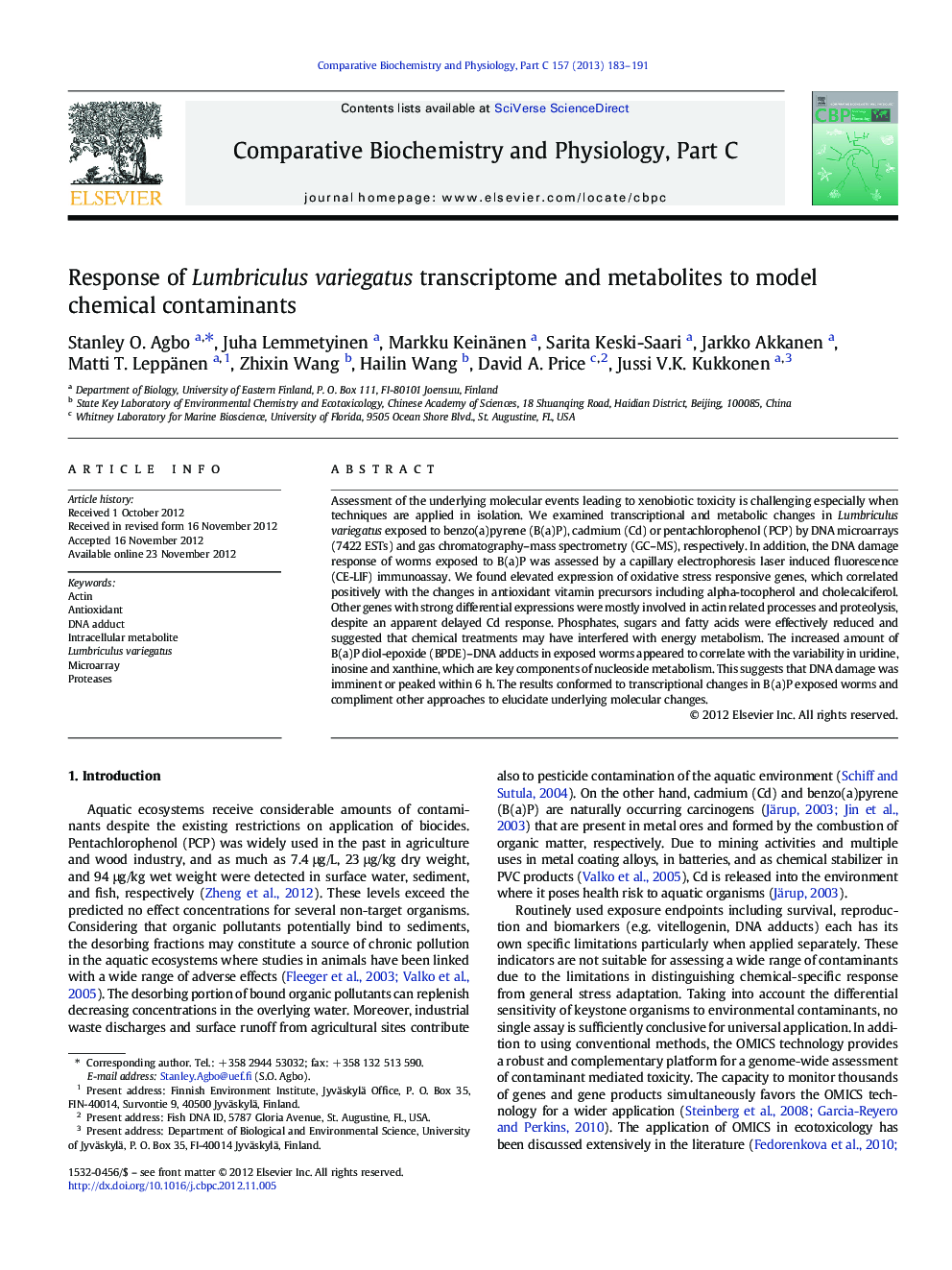| Article ID | Journal | Published Year | Pages | File Type |
|---|---|---|---|---|
| 1977494 | Comparative Biochemistry and Physiology Part C: Toxicology & Pharmacology | 2013 | 9 Pages |
Assessment of the underlying molecular events leading to xenobiotic toxicity is challenging especially when techniques are applied in isolation. We examined transcriptional and metabolic changes in Lumbriculus variegatus exposed to benzo(a)pyrene (B(a)P), cadmium (Cd) or pentachlorophenol (PCP) by DNA microarrays (7422 ESTs) and gas chromatography–mass spectrometry (GC–MS), respectively. In addition, the DNA damage response of worms exposed to B(a)P was assessed by a capillary electrophoresis laser induced fluorescence (CE-LIF) immunoassay. We found elevated expression of oxidative stress responsive genes, which correlated positively with the changes in antioxidant vitamin precursors including alpha-tocopherol and cholecalciferol. Other genes with strong differential expressions were mostly involved in actin related processes and proteolysis, despite an apparent delayed Cd response. Phosphates, sugars and fatty acids were effectively reduced and suggested that chemical treatments may have interfered with energy metabolism. The increased amount of B(a)P diol-epoxide (BPDE)–DNA adducts in exposed worms appeared to correlate with the variability in uridine, inosine and xanthine, which are key components of nucleoside metabolism. This suggests that DNA damage was imminent or peaked within 6 h. The results conformed to transcriptional changes in B(a)P exposed worms and compliment other approaches to elucidate underlying molecular changes.
